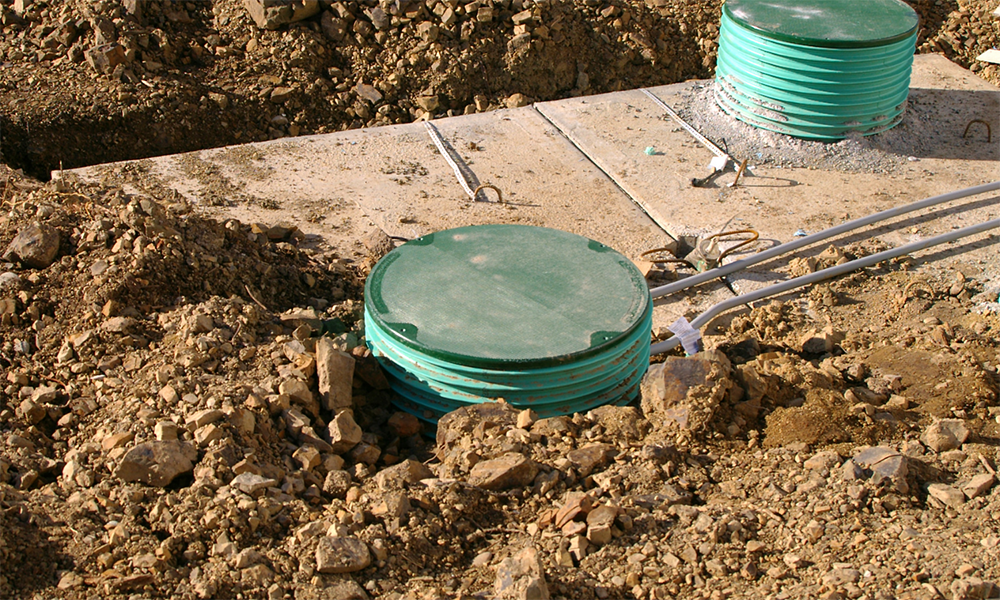Following a wildfire, homeowners using a private well or septic system are encouraged to complete a visual inspection of their system and promptly repair any damage before use.

Inspecting your septic system after a wildfire
Typically, the underground components of the well, pump, and septic system are unharmed by wildfire.
However, the wiring at the top of the well and the junction box may be burned if the fire was in proximity.
Damage to these systems may affect system performance may compromise the safety of your water supply or affect the proper disposal of wastewater:
- Electrical wires
- Controls
- Pipes
- Tanks
- Or other components
If the outside of your home or yard area near your well is burned, you should have a licensed well company inspect the system. The pump may be functioning; however, burned wires not visible from the surface may cause damage to the system.
If you do not have power to your home following the fire, a generator can be used to run the well, but the pumping system can be damaged by using undersized generators.
Contact a licensed well contractor, electrician, or your power company to determine the minimum size generator needed to properly power your pump motor.
What to do once your well starts working
Once you have your well working, flush the system thoroughly both inside and outside the house. If your water still tastes or smells:
- Earthy
- Smoky
- Burnt
You should flush your water lines again thoroughly and take a water sample for testing at a laboratory for routine well water quality parameters including metals. Any damage to the wellhead casing or seal requires testing for coliform bacteria followed by chlorination. Colorado State University Extension Factsheet 0.520 “Selecting an Analytical Laboratory” offers information on how to select a certified water quality testing laboratory and provides a list of commonly used laboratories throughout Colorado. Additionally, if flame retardants are heavily used near your well it is possible that constituents from the material may migrate into your well water over time, particularly if the wellhead is compromised.
In this situation, monitoring nitrate concentrations after a period of several months may be prudent.
Onsite wastewater (septic) systems have most of their functional components below ground and are typically more resistant to fire damage.
However, it is important to inspect your system for damage to PVC piping above or near the ground that may have been impacted by heat. If your wastewater disposal system has been damaged, or if your system is backing up or malfunctioning, discontinue use and contact your local health department for guidance and instruction on repair and restoration of the system.
More Information
- Colorado State University Extension Fact Sheets on Water and Septic System Operation and Maintenance
- Drinking-Water Resources (by the Northern Plains and Mountains Regional Water Program) http://region8water.colostate.edu/drinking_water.shtml
For additional information on using your well and septic system following a wildfire contact your local county department of health or your local county Extension agent
Disclaimer
Colorado State University, U.S. Department of Agriculture, and Colorado counties cooperating. CSU Extension programs are available to all without discrimination. No endorsement of products mentioned is intended nor is criticism implied of products not mentioned.

